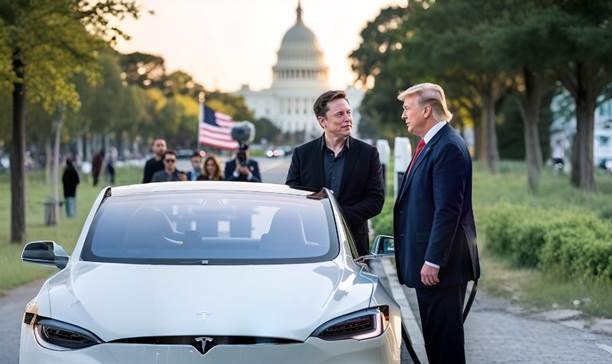In a notable break from the broader political narrative around electric vehicles, Tesla has urged the Trump administration and the Environmental Protection Agency not to weaken federal vehicle-emission standards. The company filed comments arguing that rolling back the rules would be bad policy, bad science, and ultimately bad for American consumers.

Here’s the twist: Tesla’s corporate position arrives after months of high-profile debate over EV policy, tax credits, and what some have labeled an “EV mandate.” While political rhetoric has called for ending federal EV incentives and easing emissions rules, Tesla’s filing leans hard on the scientific record and the legal framework that underpins EPA standards.
In its filing, Tesla cites the National Academy of Sciences and the EPA’s 2009 endangerment finding—the legal backbone for regulating greenhouse gases from vehicles—arguing the evidence for climate risk has only grown stronger.
“As the recent assessment from the National Academy of Sciences makes clear, the proposal does not sufficiently evaluate the voluminous and rigorously established science, as well as the additionally developed scientific record since the 2009 endangerment finding that further solidifies the level of concern from climate change and the level of confidence that the established scientific community has over these findings.”
Translation: The science is robust, and the legal basis for the current standards remains sound. Tesla says the EPA hasn’t presented a sufficient legal or factual case to reverse course.
The EPA’s light- and medium-duty emissions standards are “technology neutral,” meaning automakers can comply with cleaner gasoline engines, hybrids, plug-in hybrids, or fully electric vehicles. There’s no explicit EV mandate—just a steadily tightening cap on pollution. Relaxing these rules would allow more tailpipe emissions, slow the move to cleaner tech, and likely reduce EV offerings over time.
- EV tax credits: Politically, there’s been a push to end federal EV tax credits. In the near term, losing credits could squeeze some competitors more than Tesla, but it would also slow EV adoption—at odds with Tesla’s long-stated mission.
- Emission standards: A rollback would reduce pressure on the industry to invest in EVs and other low-emission tech. That’s negative for Tesla’s growth runway and for broader U.S. leadership in clean transportation.
In short, killing the tax credit may rearrange market share; weakening emissions rules risks shrinking the whole pie.
Policy snapshot
| Policy | Impact at a glance | Tesla’s stated position |
|---|---|---|
| EPA vehicle-emission standards (light/medium-duty) | Slower EV/hybrid rollout, higher fuel use, worse air quality | Keep the standards; science and law support them |
| Federal EV tax credit (30D) | Higher upfront prices; slower EV adoption | Not addressed in this filing; Tesla has previously criticized some credit designs but supports faster EV adoption overall |
Tight standards tend to push more efficient vehicles to market. That usually means lower fuel and maintenance costs over time, regardless of whether the car is a hybrid or an EV. Standards encourage automakers to keep improving efficiency and offering cleaner models. A rollback could shrink those future options. Less tailpipe pollution means cleaner air and fewer emissions contributing to climate change—benefits that disproportionately help kids, seniors, and people living near busy roads.
The politics of EVs can get loud, fast. But administrative rollbacks live or die on the record—data, modeling, and statutory authority. Tesla’s filing keeps the focus there: the National Academy of Sciences, the EPA’s foundational endangerment finding, and the lack of a new evidentiary basis for reversing standards.
Will the agency revise, defend, or withdraw its proposal after the comment period? Any final rule—tightening or loosening—will likely face litigation. The courts will look hard at the scientific record and the agency’s reasoning. Automakers often ask for flexibility, not outright repeal. Watch for joint letters, phased timelines, or credits trading proposals that preserve progress while smoothing the transition. If federal standards soften, expect California and allied states to lean into their own clean-vehicle rules, preserving tougher targets in large parts of the market.
Tesla’s message is clear: keep the EPA’s vehicle-emission standards. Regardless of the political back-and-forth, the company argues the science is settled, the legal foundation is sturdy, and Americans stand to benefit from cleaner, more efficient cars. It’s a reminder that beneath the headlines, policy fights are decided by evidence—and by the long-term interests of drivers who want better, cleaner options at the dealership.
Related Post




